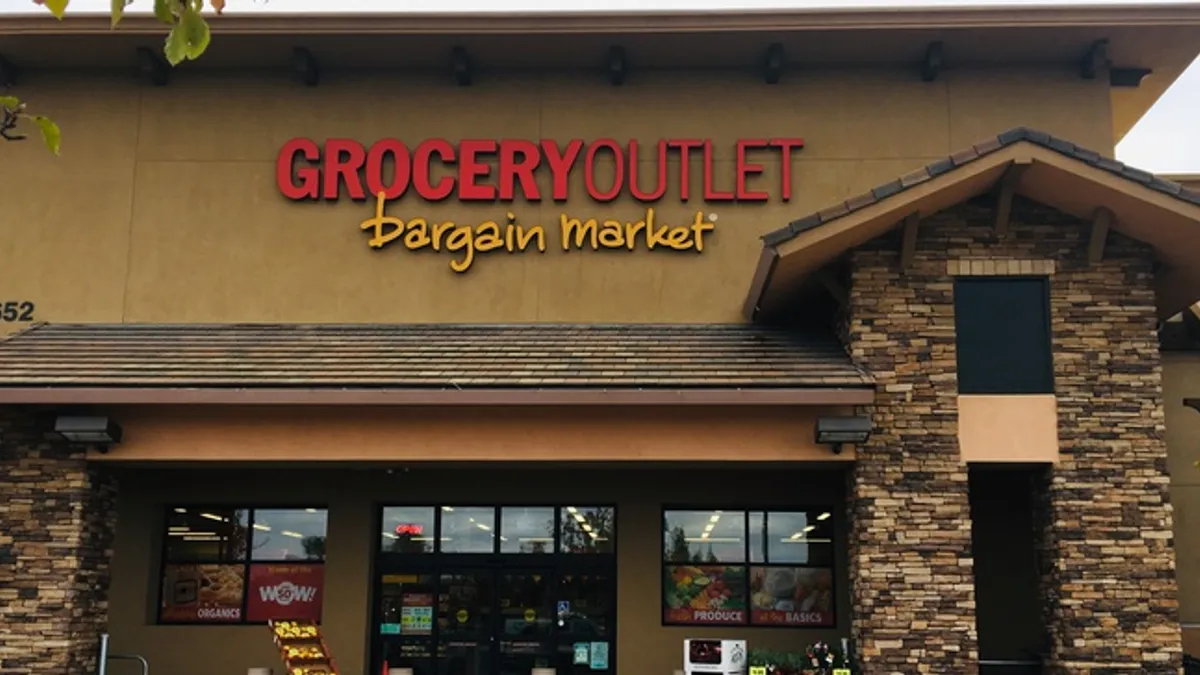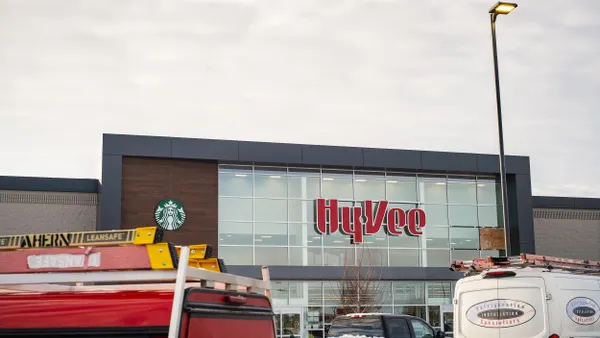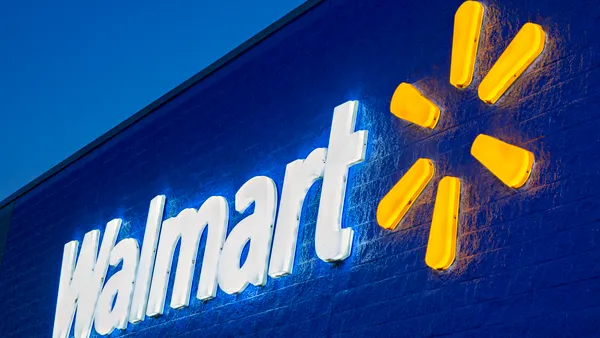Dive Brief:
- Grocery Outlet recorded $1 billion in net sales during its third quarter of fiscal year 2023, a 9.3% year-over-year increase, the discounter reported Tuesday.
- Comparable store sales were up 6.4% during the period compared with the same quarter last year, driven by an increase in the number of transactions yet partially offset by a nearly 2% decrease in average transaction size. The company saw net income jump 55.1%, to $27.1 million and adjusted EBITDA increase by 20% to $68.1 million.
- Grocery Outlet pulled back its full-year guidance largely due to financial headwinds from transitions in recent months to modernize digital systems, company executives told investors during a call on Tuesday.
Dive Insight:
For the second quarter in a row, Grocery Outlet has recorded $1 billion in net sales as the discounter continues to see strong comparable store sales growth, transaction count and store traffic increases, executives told investors.
But the discount grocer is weathering financial hurdles from the implementation of new systems, including product inventory, financial and reporting platforms, the company started in late August as part of continued efforts to modernize its digital systems. One key part of the upgrade is a new store portal.
“[We] really look forward to the enhancements that these new platforms will provide. They will give us new capabilities for how we manage business. They’ll drive efficiencies through better data and analytics that will support us with better decision-making,” Grocery Outlet President and CEO RJ Sheedy told investors during the call.
During the upgrades, however, Grocery Outlet ran into inventory visibility challenges that impacted ordering and inventory management, resulting in less product variety and more margin pressure, Sheedy said. In response, the discounter decided to provide higher commission payments to its store operators.
Grocery Outlet estimated that the headwinds negatively impacted comparable store sales in Q3 by about 150 basis points and gross margin by 50 basis points.
“[W]e did expect some disruption during this transition. It was factored into our previous guidance, just not to the degree that we’ve been experiencing it, and, of course, we’re very disappointed with the magnitude of it and we own it,” Sheedy said, adding that the company has made “very good progress” on addressing the issues.
CFO Charles Bracher told investors that the system transition is expected to “significantly impact” financial results in the fourth quarter.
For the full fiscal year, Grocery Outlet now is expecting its comp sales growth to be between 7% and 7.5% and its adjusted EBITDA in the range of $248 million to $252 million — new projections that are both lower than its raised guidance in August but still higher than its initial guidance.
Grocery Outlet’s sales growth momentum is moderating
Grocery Outlet also noted to investors that it has soft-launched its personalization app to more states following a pilot in Washington that started at the end of last year. Sheedy said that the app hasn’t arrived in California and Nevada and is delayed due to the system upgrade woes. Even though the company hasn’t done a hard launch or marketing push for the app yet, customer adoption has been good so far, he said.
Grocery Outlet operates 455 stores across eight states and debuted eight new locations in Q3, including its first Las Vegas location, which opened at the end of August.
Company executives reiterated that Grocery Outlet still sees an opportunity to have more than 4,000 locations across the U.S., noting that the company is tracking toward its goal of having a 10% growth rate for new stores. The discounter is expecting to open 13 stores in Q4, including its first location in Ohio next week.
Organic growth, opportunistic real estate deals and regional acquisitions are the primary avenues the company is looking to support its store fleet expansion efforts, Bracher and Sheedy said. Based in Emeryville, California, the discounter is focusing on a “clustering strategy” to stay more concentrated rather than spread out in the East Coast markets where it’s opening stores.












